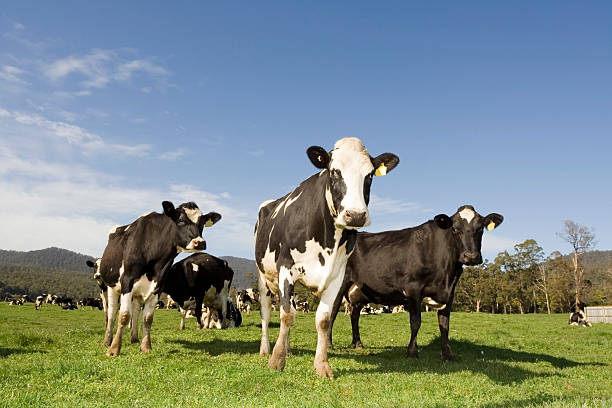Master the Art of Food Preparation With Grass Fed Meat
In the world of culinary proficiency, understanding the art of food preparation with grass-fed meat holds a distinguished setting. The distinct top quality of grass-fed meat uses a myriad of benefits that not just elevate the preference of recipes however likewise contribute to a much healthier way of living. From the tender structure to the robust taste account, grass-fed meat offers a canvas for cooking imagination. As we discover the nuances of this premium meat choice, discovering the most effective cooking methods, flavor pairings, and storage methods, a world of gastronomic possibilities unravels. Whether you are an experienced chef or an ambitious home chef, diving into the world of grass-fed meat guarantees a trip loaded with cooking revelations and mouth-watering experiences.
Benefits of Grass-Fed Meat

When picking grass-fed meat, consumers can gain from its higher levels of omega-3 fatty acids and antioxidants compared to conventionally increased meat. Constance Cattle. Omega-3 fats are important nutrients that support brain health, minimize inflammation, and promote heart health. Grass-fed meat is known to have up to 5 times extra omega-3 fats than grain-fed meat, making it a healthier choice for those seeking to boost their intake of these useful fats
In addition to omega-3 fats, grass-fed meat is likewise richer in antioxidants such as vitamins E and C, in addition to beta-carotene. Anti-oxidants play an essential function in shielding cells from damages triggered by complimentary radicals, which can add to numerous chronic diseases and increase aging. By choosing for grass-fed meat, customers can not only take pleasure in an extra flavorful and nutrient-dense protein resource however additionally sustain their total health and wellness and well-being.
Including grass-fed meat right into your diet can be a simple yet reliable method to enhance your dietary intake and profit of omega-3 fats and anti-oxidants that are normally abundant in this type of meat.
Finest Food Preparation Techniques
Using ideal cooking approaches is necessary to protect the nutrient profile and enhance the taste of grass-fed meat. When cooking grass-fed meat, it is necessary to bear in mind that it is leaner than conventionally elevated meat, making it a lot more prone to drying out if overcooked. To ensure a juicy and delicious outcome, think about cooking grass-fed meat at slightly lower temperature levels than you would with grain-fed meat.
Barbecuing is a popular technique for food preparation grass-fed meat as it allows excess fat to leak away, preventing flare-ups that can trigger charring. When barbecuing grass-fed meat, use medium warmth and keep a close eye on it to stop overcooking. Another terrific food preparation method for grass-fed meat is pan-searing. This approach helps secure in the juices and develop a delicious crust on the meat.
Slow cooking strategies such as braising or cooking are also outstanding alternatives for tougher cuts of grass-fed meat, as they assist damage down the muscle fibers and tenderize the meat. Whichever cooking technique you pick, remember to let grass-fed meat remainder after preparing to allow the juices to rearrange, guaranteeing a damp and tender last dish.
Flavor Pairings and Seasonings
To boost the all-natural tastes of grass-fed meat, tactical flavor pairings and flavorings play an essential function in boosting the general eating experience. Grass-fed meat has an abundant, distinctive taste that can be matched and improved by thoroughly picked ingredients. When it concerns flavor pairings, herbs like rosemary, oregano, and thyme job remarkably well with grass-fed beef, lamb, or bison. These natural herbs add deepness and earthiness to the meat, improving its all-natural flavors without overpowering them.
Along with herbs, spices such as black pepper, garlic, and smoked paprika can better raise the taste account of grass-fed meat dishes. These seasonings give a balance of heat, sweet taste, and smokiness that can improve the overall eating experience. When seasoning grass-fed meat, it is important to make use of top notch salt, like sea salt or Himalayan salt, to bring out the meat's tastes without adding unneeded chemicals or ingredients.
Storage and Taking Care Of Tips
Correct storage and handling techniques are vital for maintaining the top quality and freshness of grass-fed meat. When storing grass-fed meat, it is vital to keep it cooled at temperatures below 40 ° F(4 ° C) to stop bacterial development and wasting. To extend the meat's service life, consider wrapping it securely in parchment paper or butcher paper before placing it in an impermeable container or secured plastic bag - Constance Cattle. Prevent saving grass-fed meat near strong-smelling foods as it can absorb odors conveniently.
When dealing with grass-fed meat, it is very important to exercise good hygiene to avoid cross-contamination. resource Clean your hands thoroughly before and after managing the meat, and make certain that all tools and surfaces that enter contact with the meat are cleaned up find this and disinfected effectively. Additionally, use separate cutting boards for meat and vegetables to prevent microbial transfer.

Top Grass-Fed Meat Recipes
When considering the very best means to relish the top quality and freshness of grass-fed meat, checking out excellent recipes can raise your cooking experience. Grass-fed meat's rich flavor and leaner account offer themselves well to a variety of meals that highlight the all-natural benefits of the meat. One top recipe to attempt is a timeless Grilled Grass-Fed Ribeye Steak seasoned with basic active ingredients like salt, pepper, and a touch of garlic for a robust flavor. For a soothing dish, a Slow Cooked Grass-Fed Beef Stew with root vegetables and aromatic natural herbs is a hearty alternative that draws out the meat's inflammation.
If you remain in the mood for something lighter, a Grilled Grass-Fed Burger offered with fresh garnishes and a side of pleasant potato fries is a delicious option. In addition, a Herb-Crusted Grass-Fed Shelf of Lamb baked to excellence with a collection of herbs and breadcrumbs is a show-stopping recipe for unique occasions. These top grass-fed meat recipes showcase the flexibility and superior high quality of grass-fed meat, enabling you to enjoy its exceptional preference in numerous cooking developments.
Conclusion
Finally, mastering the art of cooking with grass-fed meat provides many advantages, consisting of improved nutritional value and exceptional taste. By making use of the ideal cooking methods, exploring with taste pairings and flavorings, and adhering to correct storage space and handling suggestions, you can produce healthy and tasty meals. Try some top grass-fed meat recipes to raise your culinary skills and delight in the full potential of this top quality component.
When cooking grass-fed meat, it is essential to remember that it is leaner than conventionally raised meat, making it more prone to drying out if overcooked. To ensure a juicy and flavorful outcome, take into consideration cooking see post grass-fed meat at a little reduced temperatures than you would with grain-fed meat.
When seasoning grass-fed meat, it is essential to make use of high-grade salt, like sea salt or Himalayan salt, to bring out the meat's tastes without adding unnecessary chemicals or ingredients.
Grass-fed meat's abundant flavor and leaner profile offer themselves well to a range of meals that highlight the natural benefits of the meat. These top grass-fed meat recipes display the adaptability and superior quality of grass-fed meat, permitting you to appreciate its exceptional preference in numerous culinary creations.
Comments on “Revealing the Keys Behind Constance Cattle: Beginnings, Characteristics, and Administration”